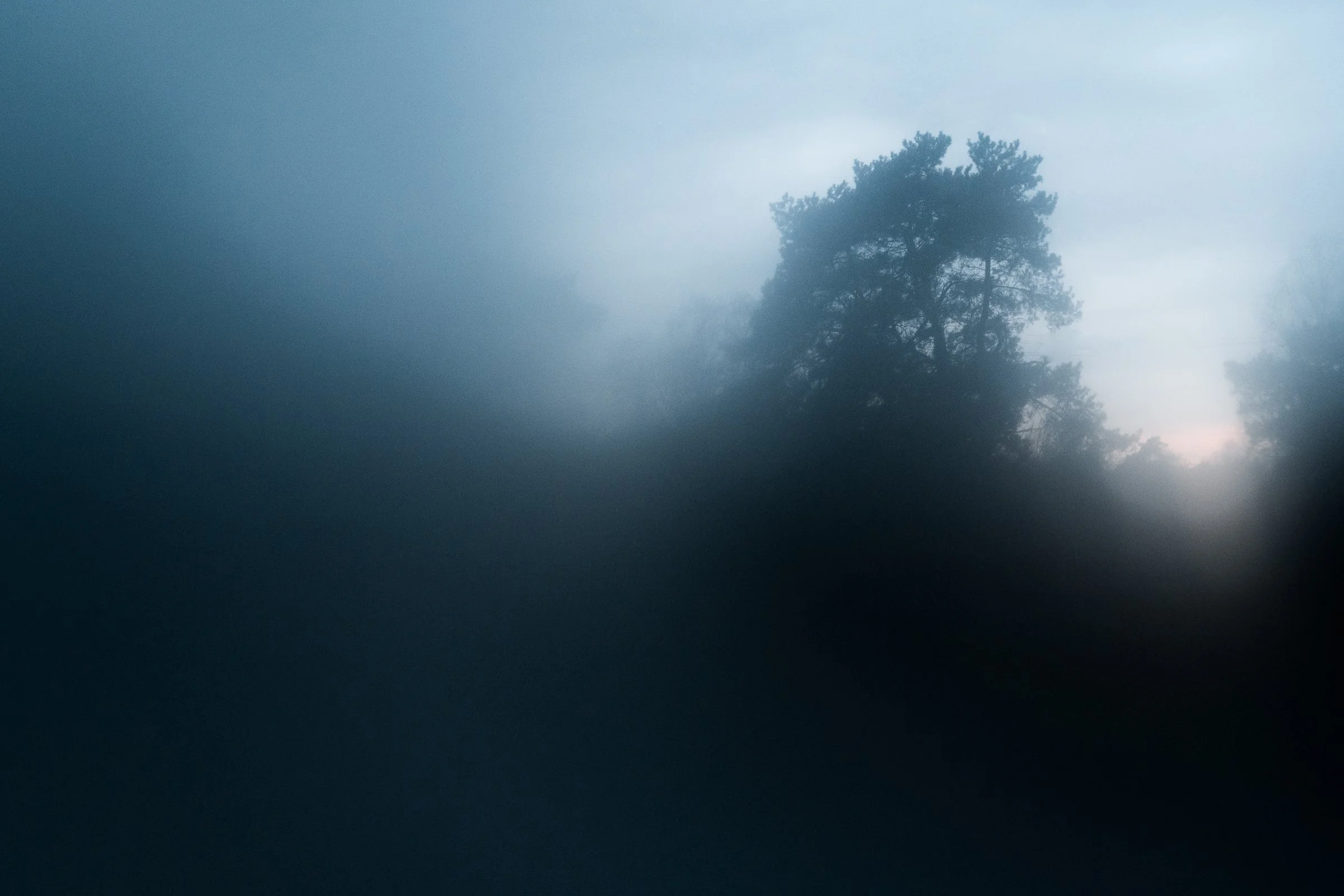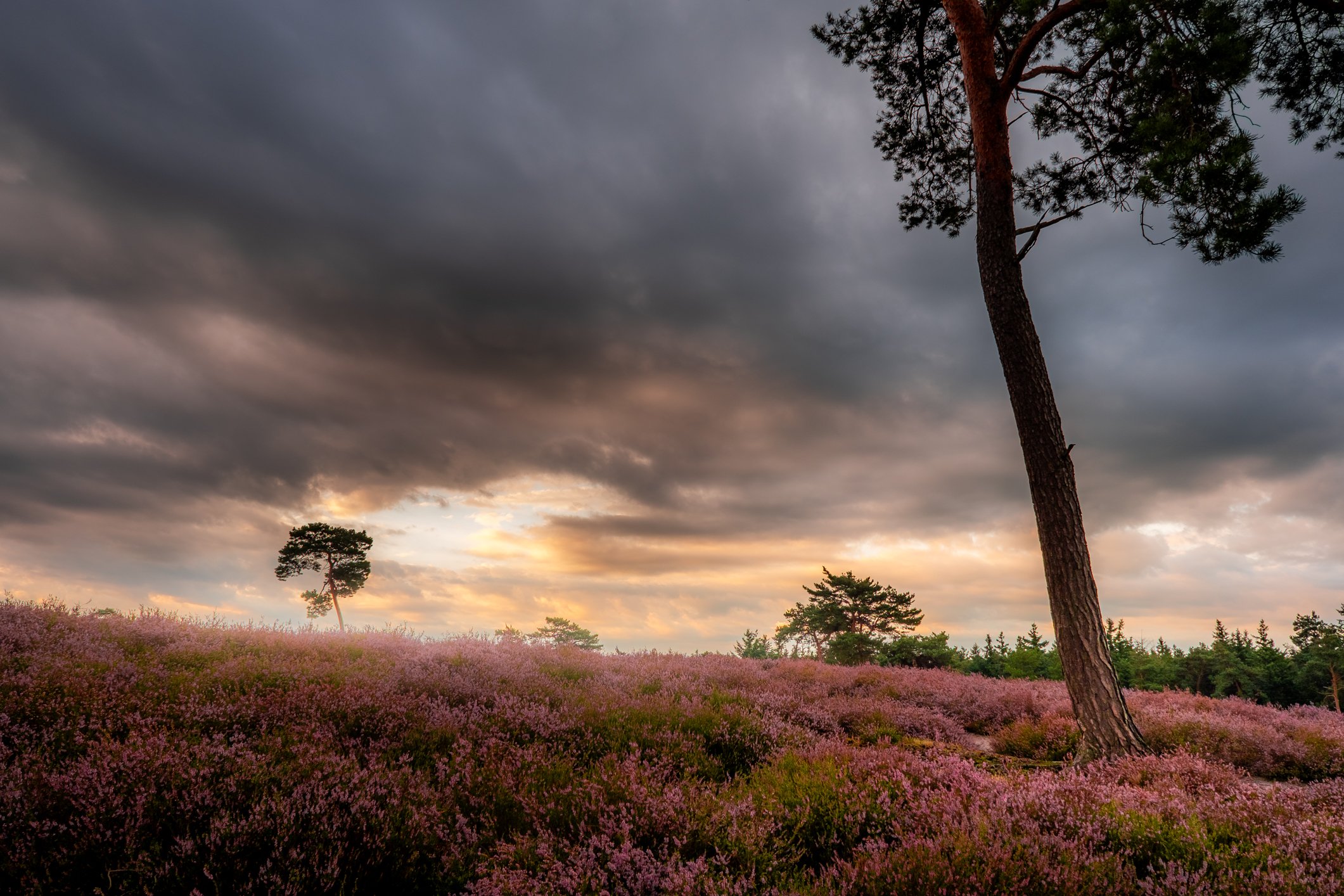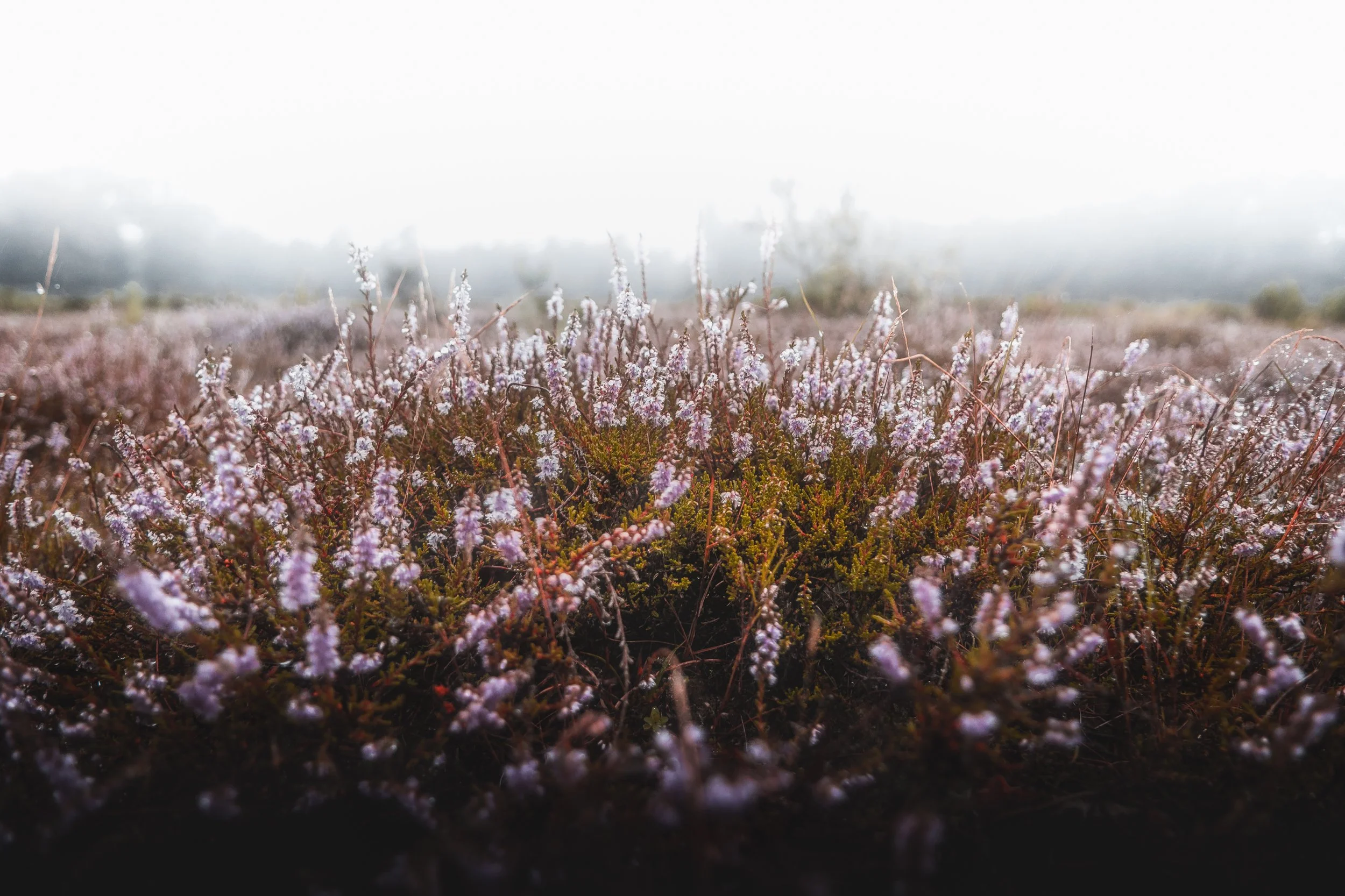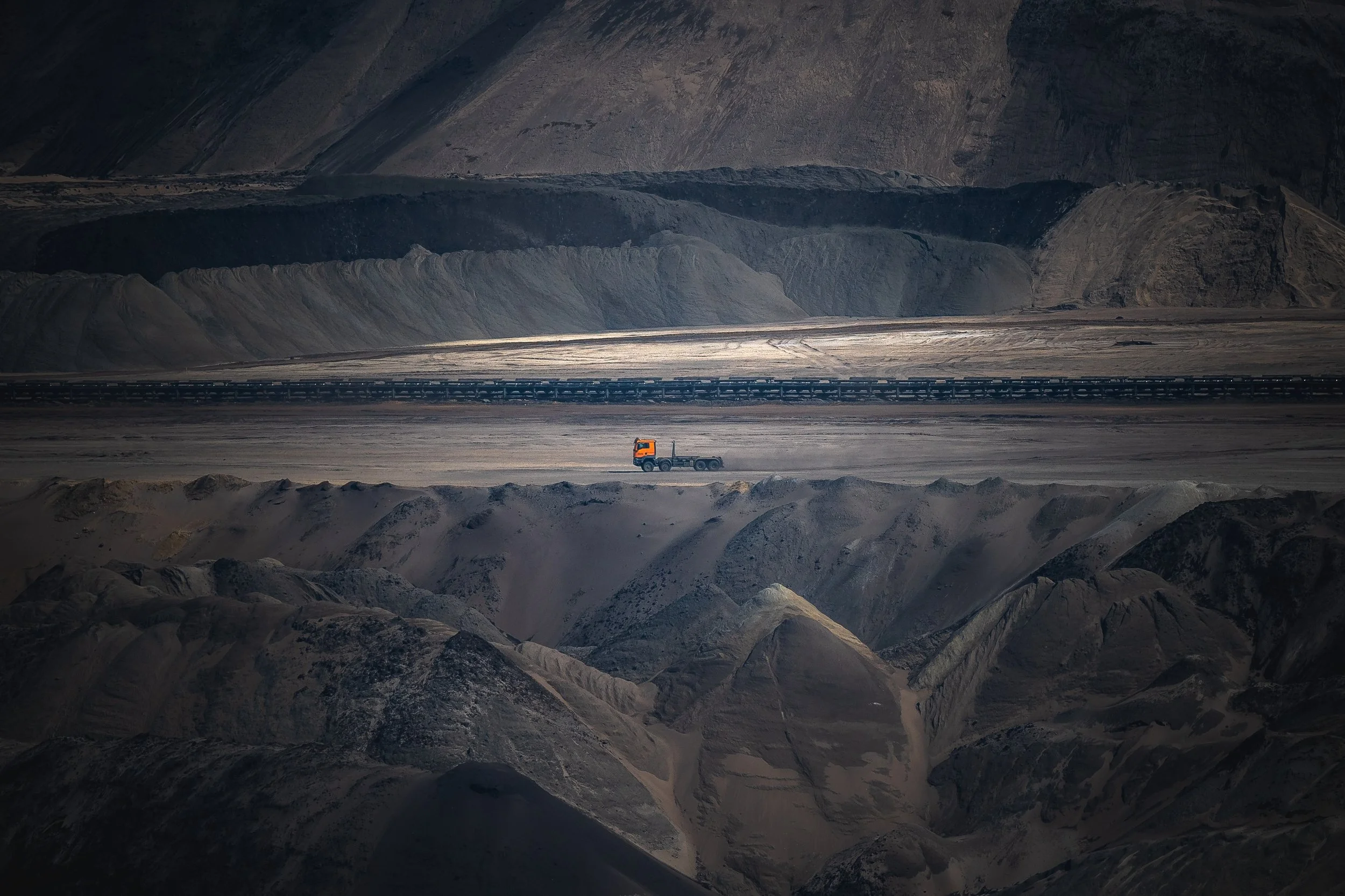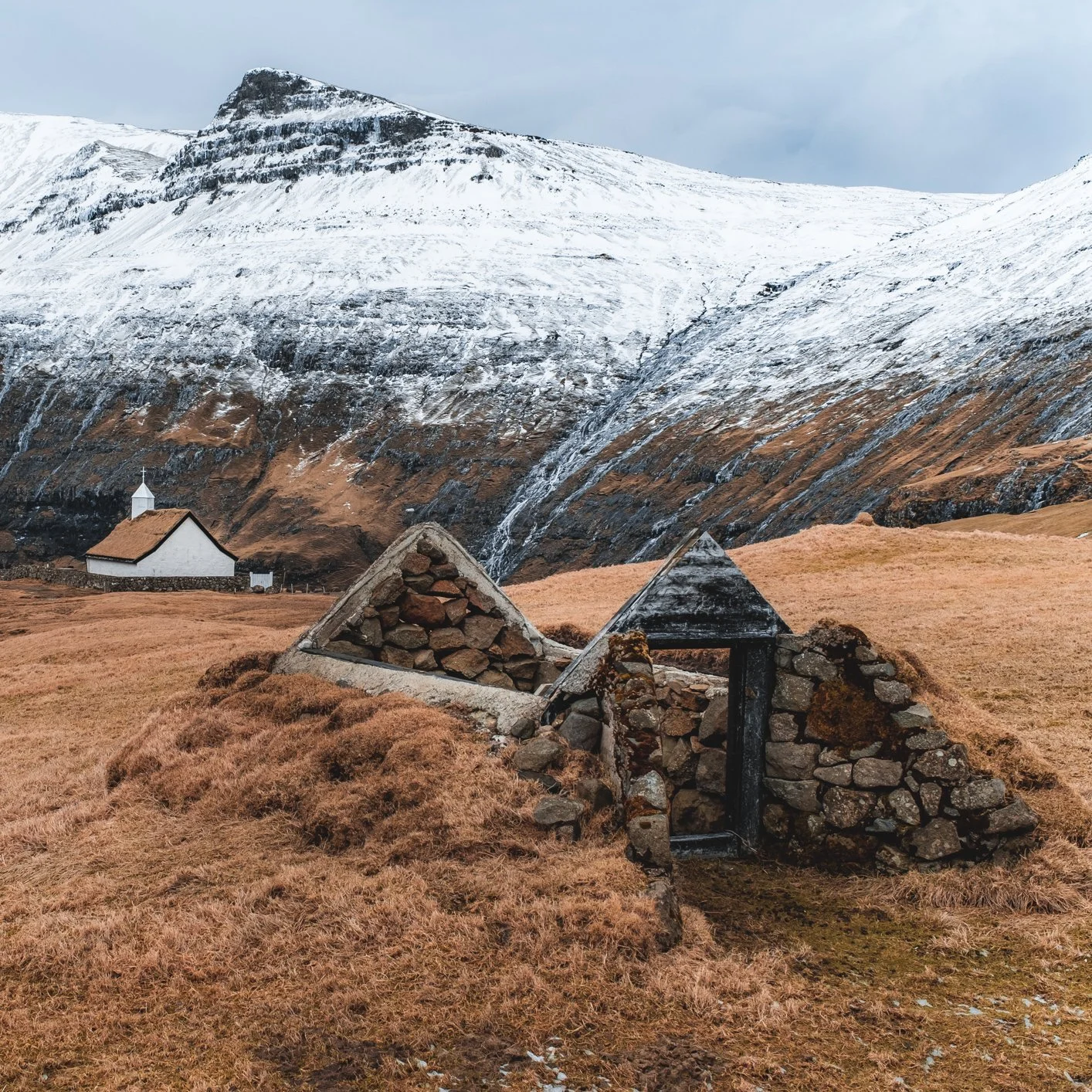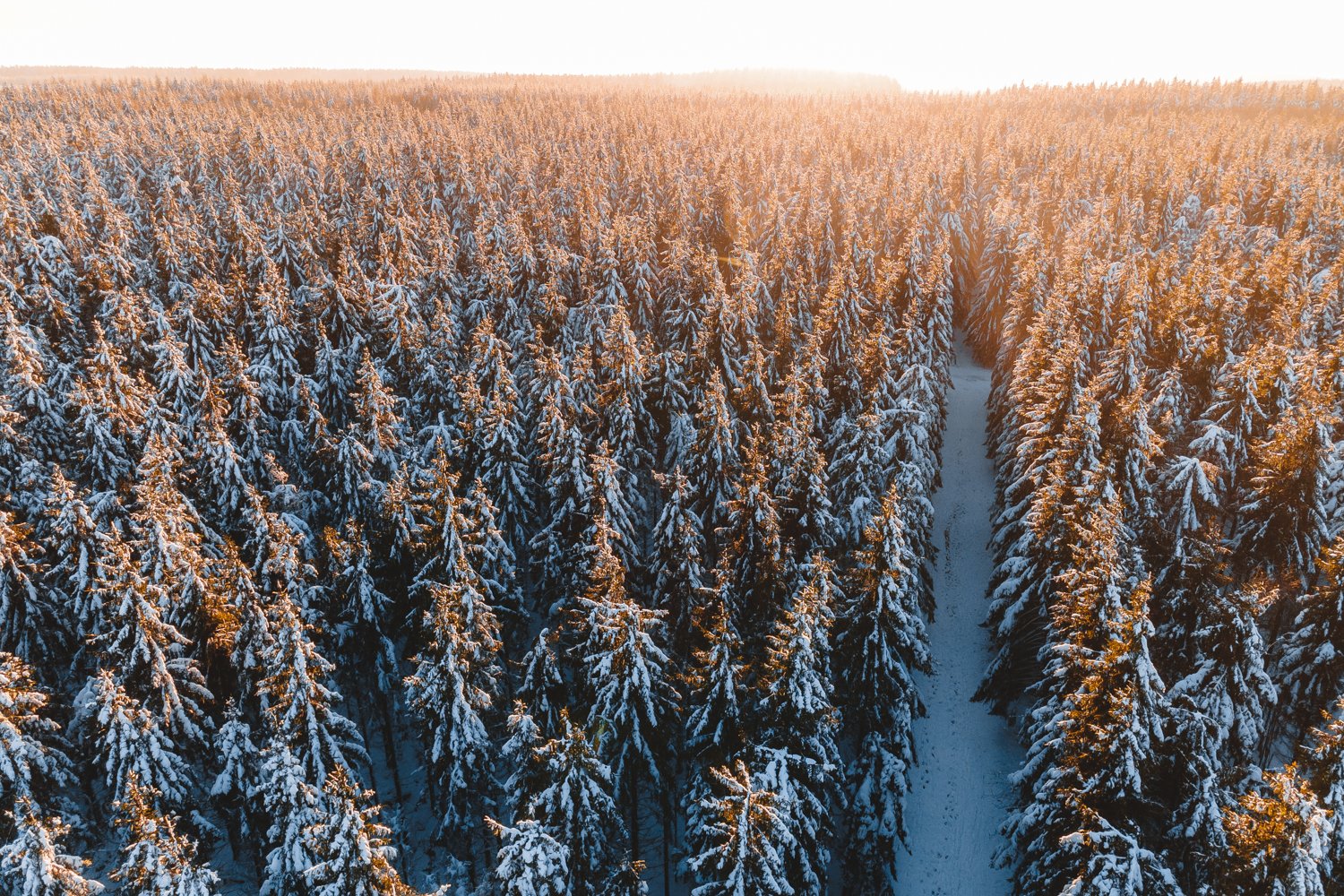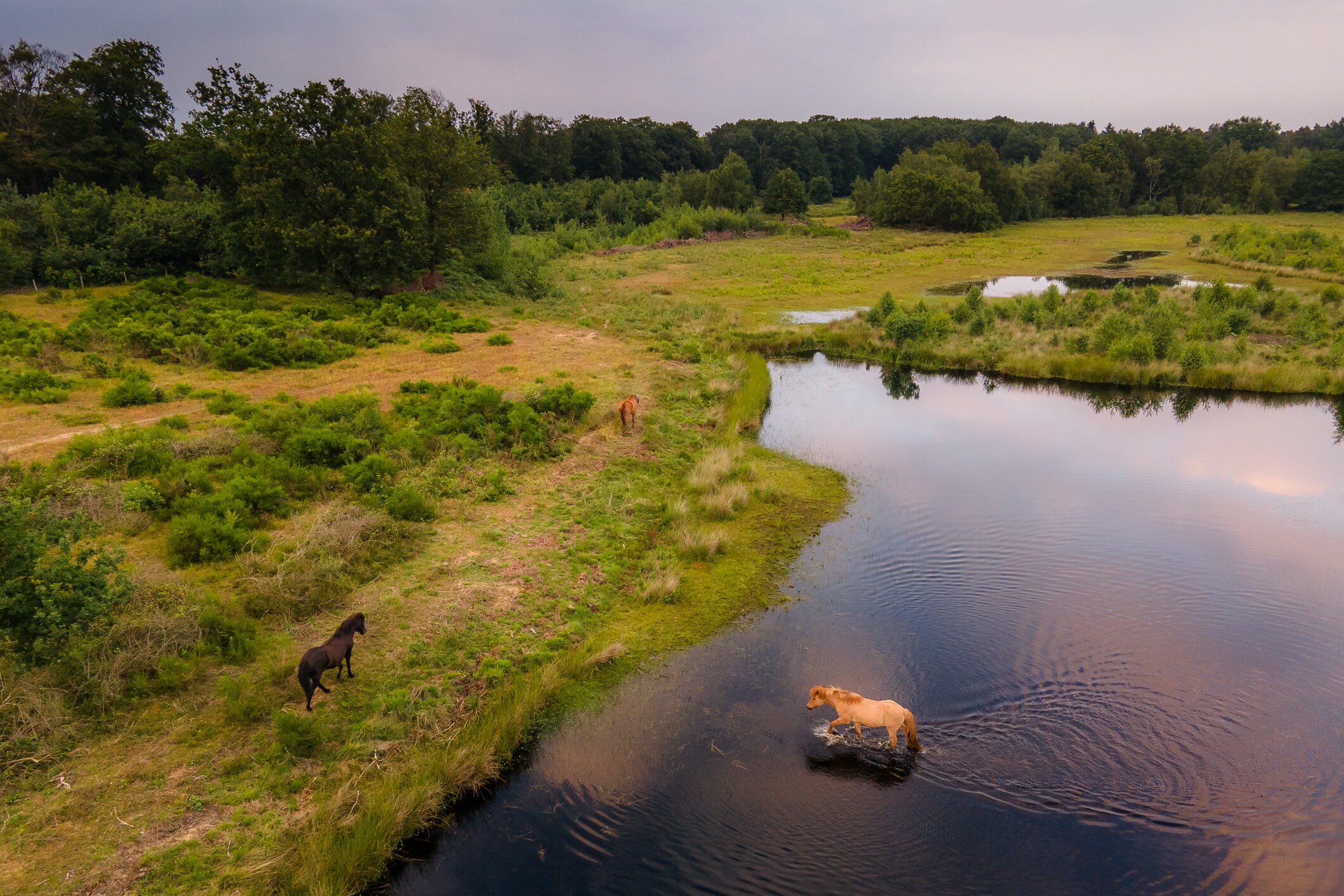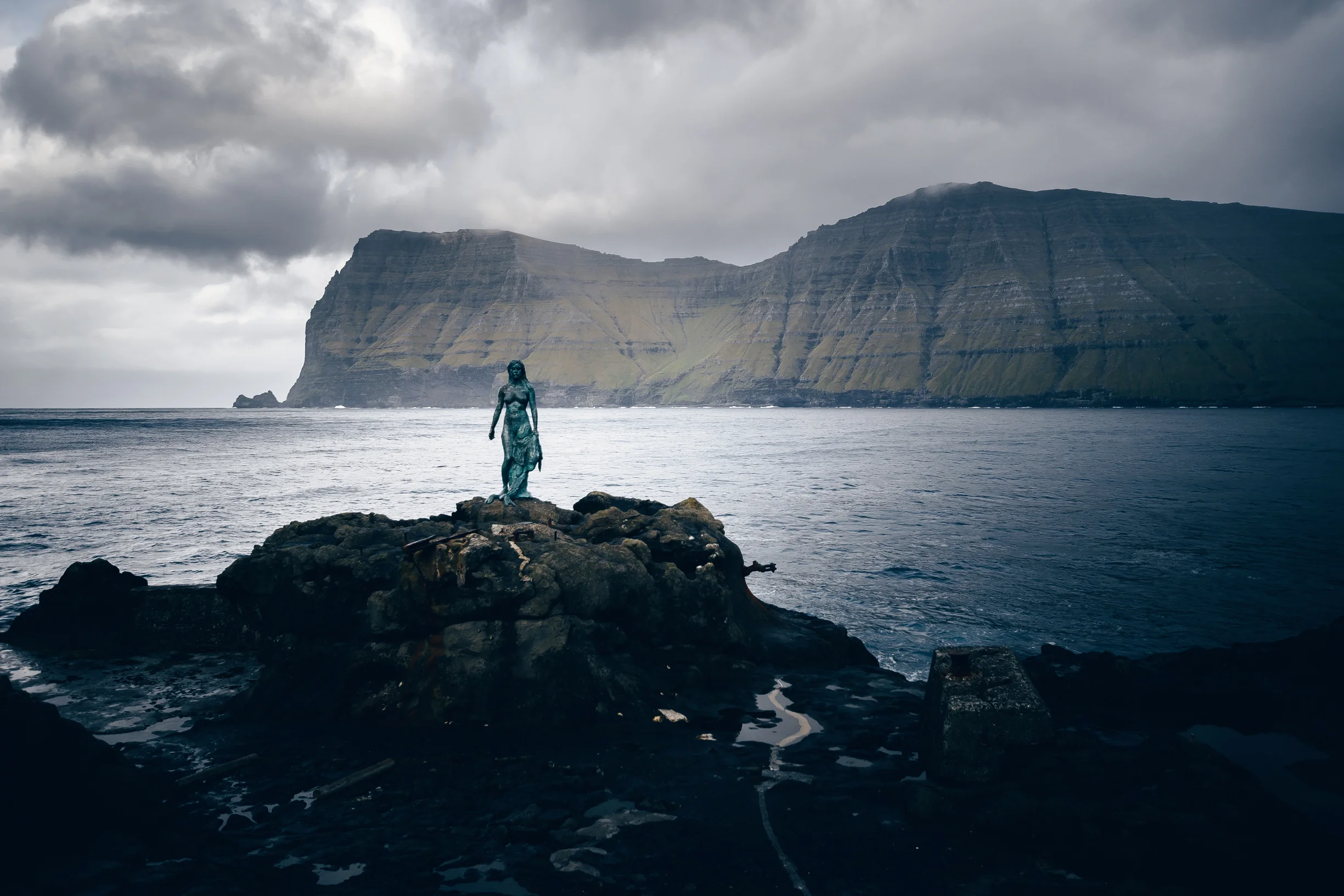Gjógv
Gjógv is a village located on the northeast tip of the island of Eysturoy, in the Faroe Islands and 63 km (39 mi) north by road from the capital of Tórshavn. The village was named after a 200-metre (650 ft) long sea-filled gorge that runs north to the sea from the village. You can see the gorge on this photograph. And even though the weather wasn’t all that I still decided to go up on the hill that overlooks the town. I slid down and fell on my face a few times, but that did not stop me from enjoying this amazing view.
Gjógv, I got dirty and soaking wet, slipped and fell on my face a few times. But I just had to get up here to take this shot.
Kópakonan
The legend of Kópakonan (the Seal Woman) is one of the best-known folktales in the Faroe Islands. Seals were believed to be former human beings who voluntarily sought death in the ocean. Once a year, on the Thirteenth night, they were allowed to come on land, strip off their skins and amuse themselves as human beings, dancing and enjoying themselves.
More about the saga right here: Visit Faroe Islands
Kópakonan (Seal Woman)
Syðrugøta
At first I had this photograph up on my site, saying it was the town of Leirvik. But I was contacted by a friendly Faroese lady that told me that the village on this photograph was not Leirvik, but Syðrugøta. So I was wrong at first. Thank you correcting me misses! Many believe that the great Viking, Tróndur í Gøtu lived and had his headquarters in Syðrugøtu, among many reasons why, is because of the good view he would have had out to the horizon and the short distance to his fleet, stationed Undir Gøtueiði. There are still many unexcavated ruins of centuries old farmhouses buried in the ground in Syðrugøtu. Another fun fact about Syðrugøta: The famous Faroese singer Eivør Pálsdóttir was born here
Syðrugøta



